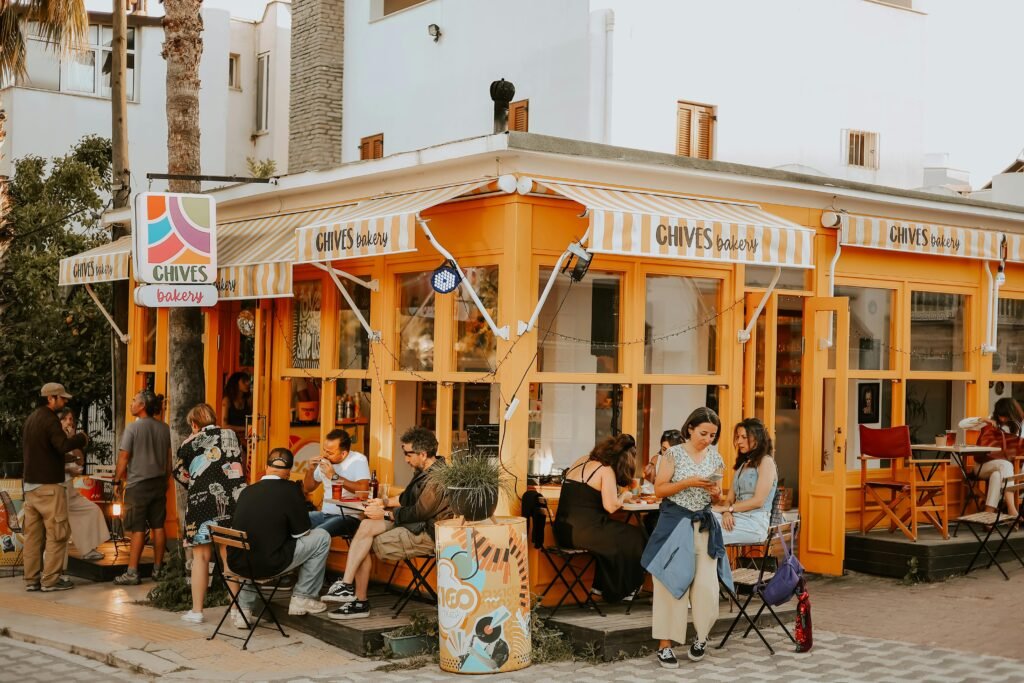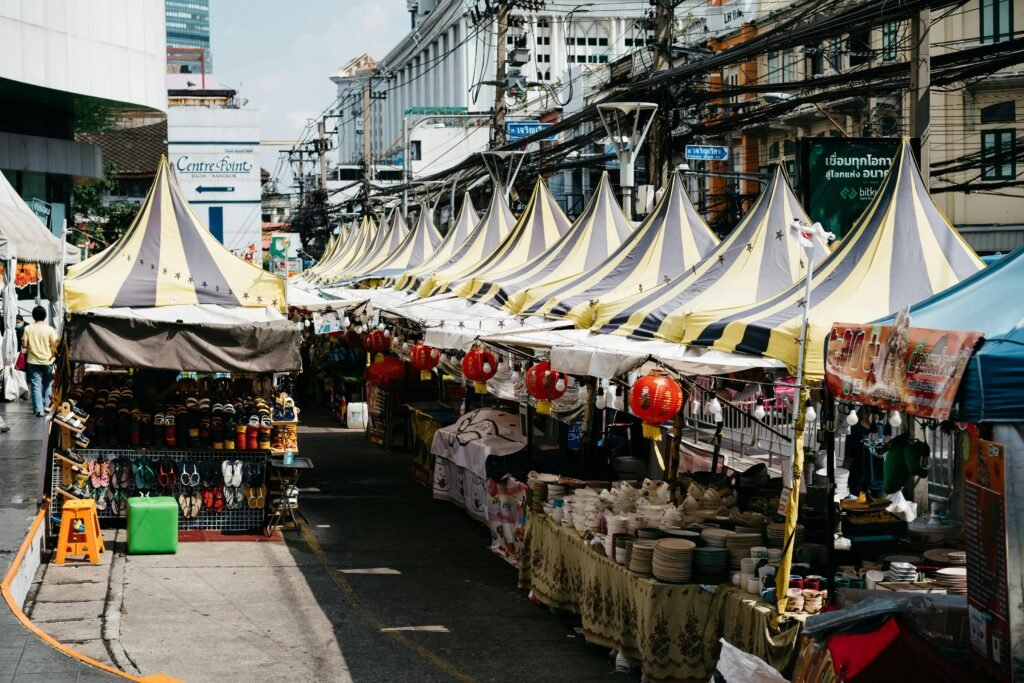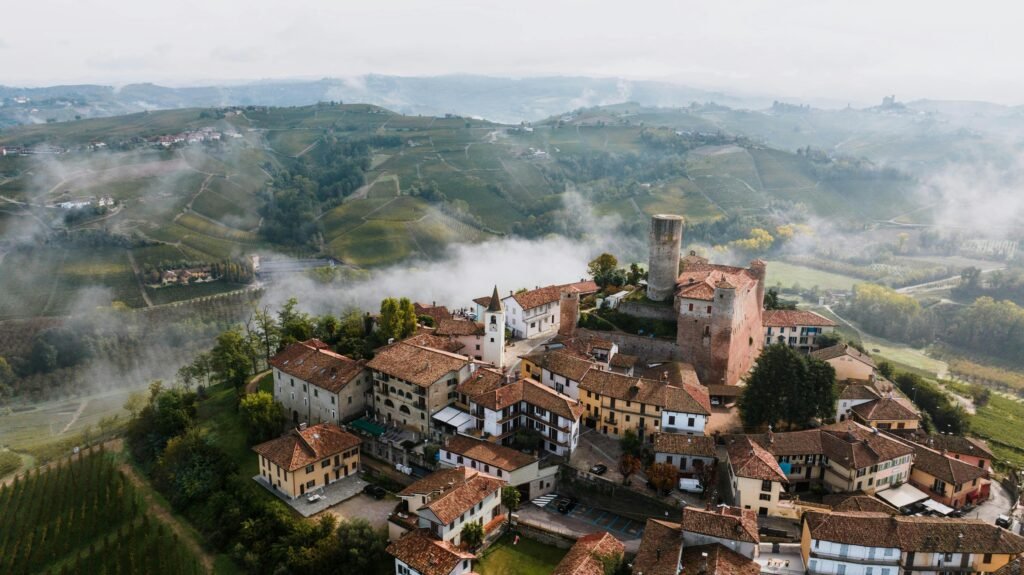You know what hit me the hardest about Palermo? It wasn’t the stunning Norman architecture or the crystal-clear Mediterranean waters – it was the smell of frying panelle at 9 AM that made my stomach growl like I hadn’t eaten in days.
That’s when I realized I’d stumbled into Italy’s true street food capital, and honestly, nowhere else even comes close.
In this article, I’m taking you on the same journey that completely changed how I think about Palermo Street Food Tour.
If you’re seeing a lot of things in Palermo, then a food tour is a great choice to truly experience the local culture and flavors
Iconic Street Markets

The heart of Palermo’s street food scene beats strongest in three incredible markets that have been feeding this city for centuries. Each one has its own personality, its own specialties, and its own way of making you feel like you’ve stepped back in time.
Ballarò Market
Location: Mercato Ballarò, Via Chiappara Al Carmine, 23, 90134 Palermo PA, Italy
Ballarò is where I fell in love with Palermo street food, and honestly, it’s probably where you will too.
This market has been operating continuously since the Arab period, which means we’re talking about over 1,000 years of unbroken food culture happening in these narrow, chaotic streets.
The atmosphere here is absolutely intoxicating.
Vendors shout prices in rapid-fire Sicilian dialect, the air is thick with the smell of frying oil and fresh herbs, and everywhere you look.
There are these incredible displays of local produce that look more like art installations than grocery displays.
What makes Ballarò special for street food lovers is the incredible mix of traditional vendors and newer spots that are putting creative twists on classic dishes.
You’ll find third-generation arancina makers working right next to young entrepreneurs who are serving deconstructed cannoli or modern takes on ancient recipes.
It’s this perfect blend of old and new that keeps the food culture alive and evolving.
Vucciria Market
Location: La Vucciria, Piazza Caracciolo, 90133 Palermo PA, Italy
If Ballarò is the heart of Palermo’s food scene, then Vucciria is definitely the soul – and maybe a little bit of the wild side too.
This market transforms completely as the day goes on, starting as a traditional food market in the morning and evolving into this incredible street food party by evening.
The historic charm here is undeniable.
You’re eating in streets that have been serving food for literally centuries, surrounded by medieval architecture that’s been watching people eat, drink, and celebrate for longer than most countries have existed.
During the day, you’ll find incredible traditional vendors selling everything from fresh seafood to ancient Sicilian specialties that you won’t find anywhere else.
But it’s the evening energy that really sets Vucciria apart.
Around sunset, the market takes on this incredible festive atmosphere.
Local bars set up outdoor tables, street food vendors fire up their grills, and suddenly you’re part of this impromptu food festival that happens every single night.
Capo Market
Location: Mercato del Capo, Via Porta Carini, 90134 Palermo PA, Italy
Capo is my secret weapon – the market I take people to when they want to feel like real locals instead of tourists. It’s vibrant, authentic, and somehow less discovered by the tourist crowds, which means you get a much more genuine experience of how Palermitans actually shop and eat.
The vendors here know their regular customers by name, and after two years of shopping here, I’m finally starting to get that treatment too.
There’s something incredibly special about having your favorite vendors remember how you like your coffee or which type of arancina you prefer.
What I love most about Capo is the incredible local finds you’ll discover here.
This is where I found the best sfincione I’ve ever tasted, made by a family that’s been perfecting their recipe since the 1920s.
It’s where I discovered seasonal specialties that don’t exist in the tourist areas, and where I learned about traditional preparations that most visitors never even hear about.
Must-Try Street For Palermo Street Food Tour
Now let’s get to the good stuff – the actual food that makes Palermo’s street scene so legendary. Each of these dishes tells a story, and trust me, once you understand the history and culture behind what you’re eating, every bite becomes so much more meaningful.
Arancina (Fried Rice Ball)
Okay, first things first – in Palermo, it’s “arancina” (feminine), not “arancino” (masculine) like they say in Catania.
Get this wrong and you’ll immediately mark yourself as either a tourist or, even worse, someone from the eastern part of Sicily.
The shape is different too.
Palermo arancine are pear-shaped, not round like the ones in Catania, and there’s actually a beautiful reason for this.
The pear shape is supposed to represent the prickly pear fruits that grow wild all over Sicily, connecting this street food to the island’s landscape in this incredibly poetic way.
But let’s talk about what really matters – how they taste.
A perfect Palermo arancina has this incredible contrast between the crispy, golden exterior and the creamy, flavorful rice inside.
The rice is usually mixed with saffron (that Arab influence again), which gives it this gorgeous yellow color and subtle, exotic flavor that you can’t quite put your finger on until someone tells you what it is.
The filling options are where things get really interesting.
Traditional ragù is the classic choice – a rich meat sauce that’s been simmering for hours until it’s thick and intensely flavorful. But you’ll also find versions with spinach and cheese, mushrooms, or even seafood.
My personal favorite is the ragù version from this tiny stall in Ballarò where the woman has been making them the same way for thirty years.
Pane con la Milza (Spleen Sandwich)
I’m not going to lie to you – when someone first described pane con la milza to me, I was absolutely horrified.
A sandwich filled with spleen and lung? That sounded like something you’d eat on a dare, not something that would become one of my favorite Palermo foods.
But here’s the thing about this dish – it represents everything that’s beautiful about Palermo’s street food philosophy.
This sandwich was created by working-class people who couldn’t afford to waste any part of the animal, so they took the organ meats that wealthy people didn’t want and turned them into something absolutely delicious.
The organs are slowly simmered in lard with bay leaves and other aromatics until they become incredibly tender.
Then they’re chopped up and served in a soft sesame seed bun that’s been soaked in the cooking liquid.
You can order it “schiettu” (single, without cheese) or “maritatu” (married, with fresh ricotta and aged caciocavallo cheese).
The taste is rich, savory, and absolutely nothing like what you’d expect from organ meat. It’s comfort food in its purest form – warming, satisfying, and somehow familiar even if you’ve never had anything like it before.
Panelle e Crocchè (Chickpea Fritters & Potato Croquettes)
This is the combination that made me understand why Palermo’s street food is so addictive.
Panelle are these thin, crispy fritters made from chickpea flour, and crocchè are creamy potato croquettes, and when you eat them together in a crusty roll, it’s like experiencing the perfect marriage of textures and flavors.
The panelle-making process is almost hypnotic to watch.
The vendor mixes chickpea flour with water and spices to create this smooth batter, then spreads it thin on marble slabs to cool and set.
Once it’s firm, they cut it into rectangles and fry them until they’re golden and incredibly crispy.
The result is something that’s creamy on the inside, crispy on the outside, and has this subtle, nutty flavor that’s completely addictive.
Crocchè are the perfect complement – these oval-shaped potato croquettes that are creamy, rich, and usually flavored with parsley and cheese.
When you bite into one, it’s like eating a cloud of perfectly seasoned mashed potatoes wrapped in a crispy shell.
Sfincione (Sicilian Pizza)
Calling sfincione “Sicilian pizza” is like calling a Beethoven symphony “background music” – technically accurate but completely missing the point.
This is Palermo’s own unique creation, and it’s so much more interesting than regular pizza that I honestly don’t know why it isn’t famous worldwide.
The base is what makes sfincione special.
Instead of thin, crispy pizza dough, sfincione uses this thick, spongy bread that’s more like focaccia.
The texture is incredibly light and airy, and it soaks up all the flavors of the toppings in this amazing way.
But here’s what most people don’t realize about sfincione – it’s not trying to be pizza.
It’s its own thing entirely, with its own history and its own purpose.
Stigghiola (Grilled Intestines)
Stigghiola is where Palermo street food gets really adventurous, and I’ll be honest – it took me a while to work up the courage to try this one.
We’re talking about lamb or goat intestines that are cleaned, seasoned, wrapped around green onions, and grilled over an open flame until they’re crispy on the outside and tender on the inside.
The first time I tried stigghiola, I was with my neighbor Giuseppe, who insisted that I couldn’t understand Palermo cuisine without experiencing this dish. He took me to his favorite vendor, a guy who’s been grilling stigghiola at the same corner for over twenty years, and basically forced me to try it.
The taste is intense – there’s no other way to describe it.
It’s rich, gamey, and has this incredible smoky flavor from being grilled over an open flame.
What I love about stigghiola culture is how social it is.
People don’t usually eat this alone – they gather around the grill, chat with the vendor and other customers, and make an event out of it.
It’s street food as a community experience, which is really what Palermo’s food culture is all about.
Cannolo & Other Sweets
No Palermo street food tour would be complete without ending on a sweet note, and when it comes to Sicilian sweets, cannoli are absolutely the crown jewel.
But here’s what most tourists don’t know – there’s a right way and a wrong way to eat cannoli, and getting it wrong is almost insulting to the pastry makers who’ve been perfecting this art for centuries.
First rule: never, ever buy pre-filled cannoli. Real cannoli are filled to order, which means the shell stays crispy and the ricotta filling is fresh and creamy.
If you see cannoli sitting in a display case already filled, just walk away.
You’re looking at cannoli that are probably soggy and definitely not authentic.
The shell should make that perfect crackling sound when you bite into it, and it should have this subtle sweetness that complements the ricotta without competing with it.
The Historical Flavors of Palermo
Let me paint you a picture of how Palermo became this incredible melting pot of flavors, because understanding the history makes every bite taste about ten times better.
This city has been conquered, ruled, and influenced by pretty much everyone who ever sailed through the Mediterranean, and each group left their culinary fingerprints all over the local cuisine.
The Arabs arrived in 827 AD and brought things like rice, saffron, and citrus fruits – ingredients that are now absolutely essential to Sicilian cooking. They introduced techniques for preserving foods and created some of the earliest versions of what we now call arancine.
The Normans came next and added their love for rich, hearty dishes. Then the Spanish brought tomatoes and chocolate, which sounds weird together but trust me, you haven’t lived until you’ve tried caponata with a hint of dark chocolate.
But here’s what really fascinates me about Palermo’s food evolution – it all happened in the streets.
Unlike other Italian cities where culinary traditions developed in aristocratic kitchens or monasteries, Palermo’s food culture grew up in the markets and street stalls.
The street markets became these incredible laboratories where different cultural influences mixed together in the most natural way possible.
I remember talking to this elderly vendor in Ballarò who told me that his family’s arancina recipe has been passed down for six generations.
But when he described the ingredients and techniques, I could hear echoes of all these different cultural influences.
Guided Tours vs. DIY Street Food Tours
This is probably the question I get asked most often: should you join a guided food tour or explore on your own?
After experiencing both approaches multiple times, I can tell you that each has its advantages, and the best choice really depends on what kind of experience you’re looking for.
Guided tours are fantastic if you want to maximize your time and minimize your chances of making rookie mistakes.
A good local guide will take you to vendors you never would have found on your own, explain the history and culture behind each dish, and help you navigate the language barrier.
However, guided tours do have some limitations.
You’re eating on someone else’s schedule, visiting places that might be more touristy than authentic, and missing out on the spontaneous discoveries that make solo food exploration so exciting.
Plus, they can be expensive – most good food tours in Palermo cost between 50-80 euros per person.



